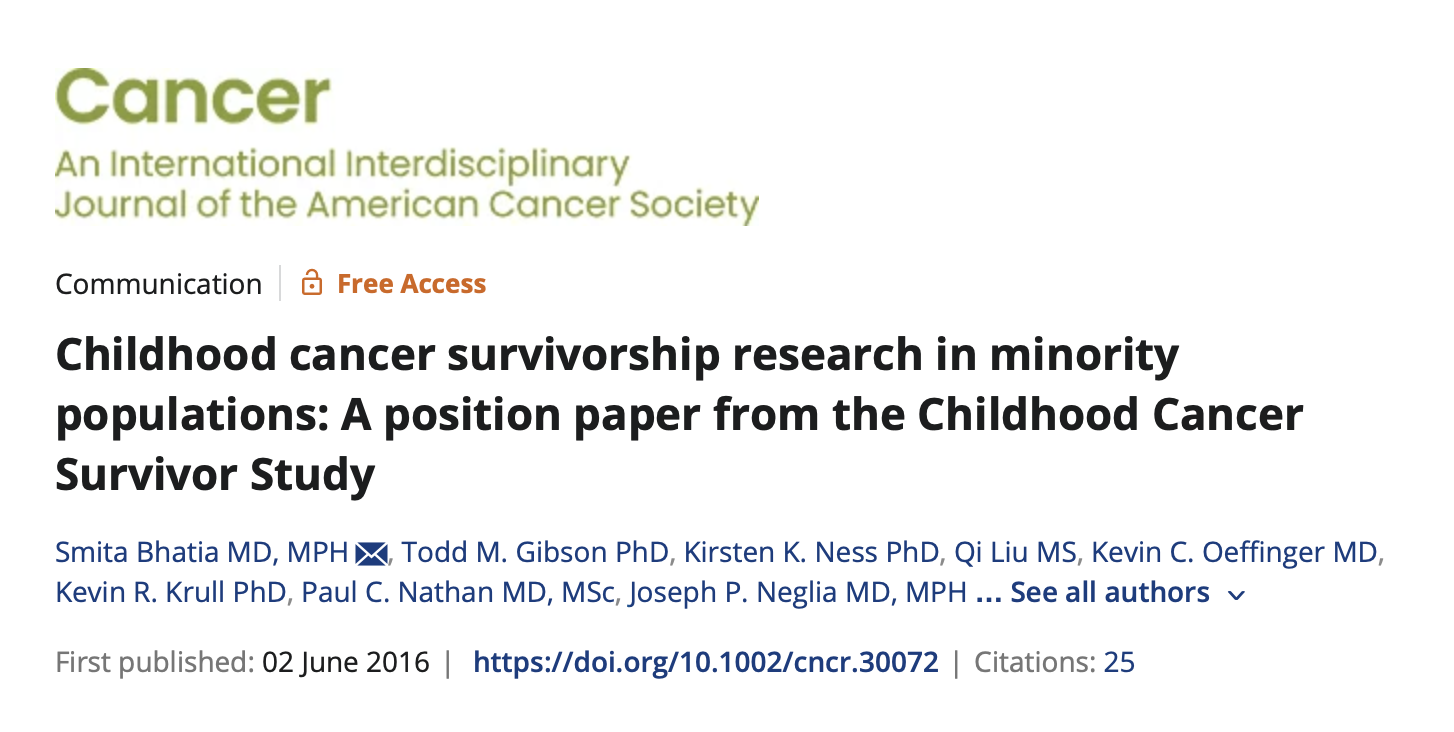NCD Alliance
Pocket guide: Turning HLM4 commitments into action
Guide
27 Nov 2025
15 Aug 2016

By the middle of this century, racial/ethnic minority populations will collectively constitute 50% of the US population. This temporal shift in the racial/ethnic composition of the US population demands a close look at the race/ethnicity-specific burden of morbidity and premature mortality among survivors of childhood cancer. To optimize targeted long-term follow-up care, it is essential to understand whether the burden of morbidity borne by survivors of childhood cancer differs by race/ethnicity. This is challenging because the number of minority participants is often limited in current childhood cancer survivorship research, resulting in a paucity of race/ethnicity-specific recommendations and/or interventions. Although the overall childhood cancer incidence increased between 1973 and 2003, the mortality rate declined; however, these changes did not differ appreciably by race/ethnicity. The authors speculated that any racial/ethnic differences in outcome are likely to be multifactorial, and drew on data from the Childhood Cancer Survivor Study to illustrate the various contributors (socioeconomic characteristics, health behaviors, and comorbidities) that could explain any observed differences in key treatment-related complications. Finally, the authors outlined challenges in conducting race/ethnicity-specific childhood cancer survivorship research, demonstrating that there are limited absolute numbers of children who are diagnosed and survive cancer in any one racial/ethnic minority population, thereby precluding a rigorous evaluation of adverse events among specific primary cancer diagnoses and treatment exposure groups.